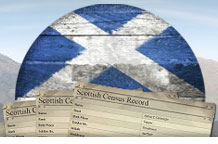Genes Reunited Blog
Welcome to the new Genes Reunited blog!
- We regularly add blogs covering a variety of topics. You can add your own comments at the bottom.
- The Genes Reunited Team will be writing blogs and keeping you up to date with changes happening on the site.
- In the future we hope to have guest bloggers that will be able to give you tips and advice as to how to trace your family history.
- The blogs will have various privacy settings, so that you can choose who you share your blog with.
Official Blogs
The Victorians and the birth of British Tourism
Every month, Genes Reunited chooses a family photo sent in by our customers to be examined by dress-historian, portrait specialist and photo detective Jayne Shrimpton. This month’s family photo was a lovely image of a group of very smartly dressed Victorian young ladies on a hill walking trip in the Lake District.
Following the technological developments of the industrial revolution and the introduction and development of Britain’s railways, leisure and tourism really took off in the Victorian era. The growing middle class had more money and time on their hands than previous generations and, for those who could afford it, taking a week’s summer holiday became a fashionable and popular thing to do.
Rural retreats and seaside breaks were the most common choices and coastal towns such as, Margate, Brighton and Great Yarmouth became popular resorts. Victorian trippers and holiday makers were drawn by the bracing sea air and a variety of attractions that are still popular today, such as fish and chips, donkey rides, bathing in the sea and building sand castles on the beach.
The bigger resorts, and especially those which catered for the rapidly-expanding working-class holiday market of the late nineteenth century, most obviously Blackpool and Southend, housed 'pleasure palaces', venues that combined music-hall, variety and dancing with other attractions such as zoos, opera houses, theatres, aquariums, lagoons complete with Venetian gondolas, pleasure gardens and exhibitions.
In the mid-1800s, a number of innovations had led to tourism becoming a mainstream pastime. German Publisher, Karl Baedecker, had released a series of travel guides that set a new standard and proved hugely popular. His name became a synonym for a travel guide and his style popularised the notion of sightseeing and tourist obligations. The first Baedecker published in English went on sale in 1869 and proved to be a huge hit.
In 1841, entrepreneur Thomas Cook arranged to take a group of 540 temperance campaigners from Leicester Campbell Street station to a rally in Loughborough. This was the first privately chartered excursion train to be advertised to the general public. Cook arranged for the rail company to charge one shilling per person that included rail tickets and food for the journey and the package holiday was born. Cook established his travel agency, Thomas Cook & Son, and by 1888, the company had offices all around the world sold over 3.25 million tickets in 1890 alone.
Derbyshire Quaker and professional photographer, Francis Firth, was another figure who played an important role in popularising the summer holiday. Firth’s hugely popular images of English towns and the Middle East presented consumers with realistic likenesses of distant lands and locations for the very first time. Not only did this make the world seem slightly smaller, it massively increased the English appetite for travel.
If you wish to learn more about how your ancestors spent their time off, why not explore our collection of British Newspapers. Contemporary reports, reviews and advertisements for the various attractions on offer in Britain’s resorts can offer remarkable insights into how Victorian Briton’s spent their leisure time. If your ancestors were a bit more ‘well to do’, try searching our passenger lists leaving the UK. The Passenger Lists hold the details of over 24 million people leaving the UK on long haul voyages and can reveal your ancestors destination, place of departure, class of accommodation, the ships name as well as that of the Captain and any relevant dates. You can also try searching for your ancestor in our Passport Application records if they travelled abroad after 1855 when they were introduced as a standard document. The Index To Register Of Passport Applications cover the years 1851-1903.
Comments
|
Send Message |
A spin off of tourism in the Victorian era was the growth in souvenirs. Goss and other manufacturers produced heraldic china that carried the coat of arms of the town visited and took the form of an item in miniature often found in the local museum.
|
|
Send Message |
Baedeker and Frith are the correct spellings of two of the people referred to!
|

